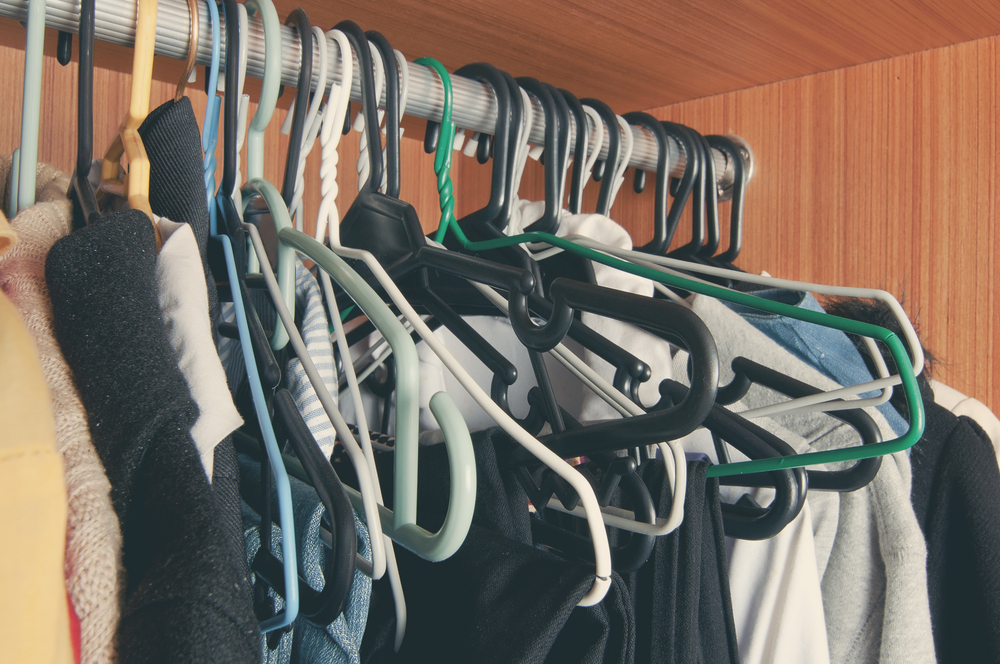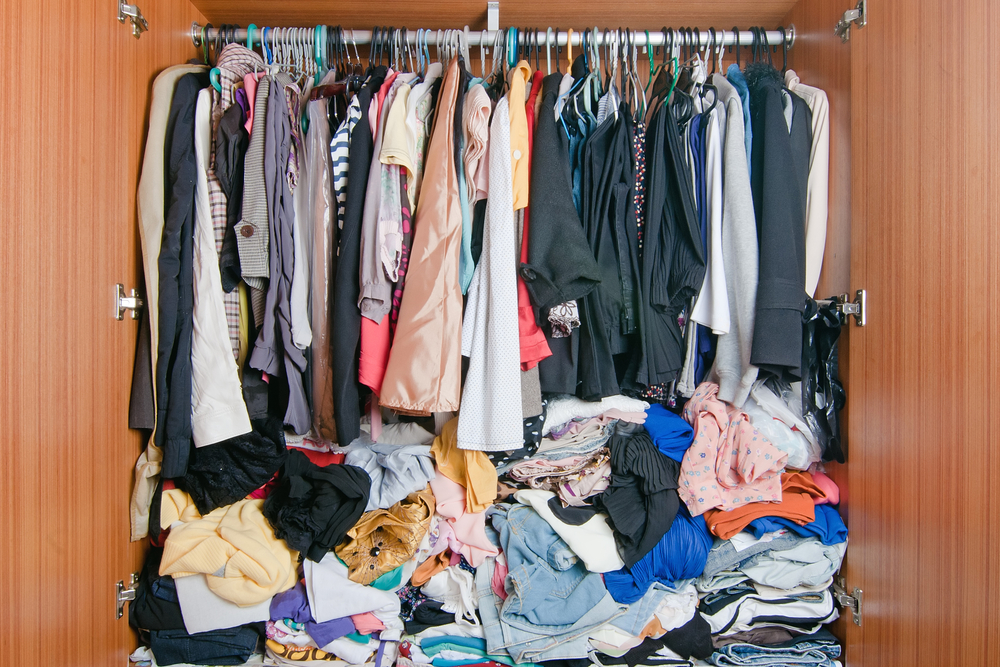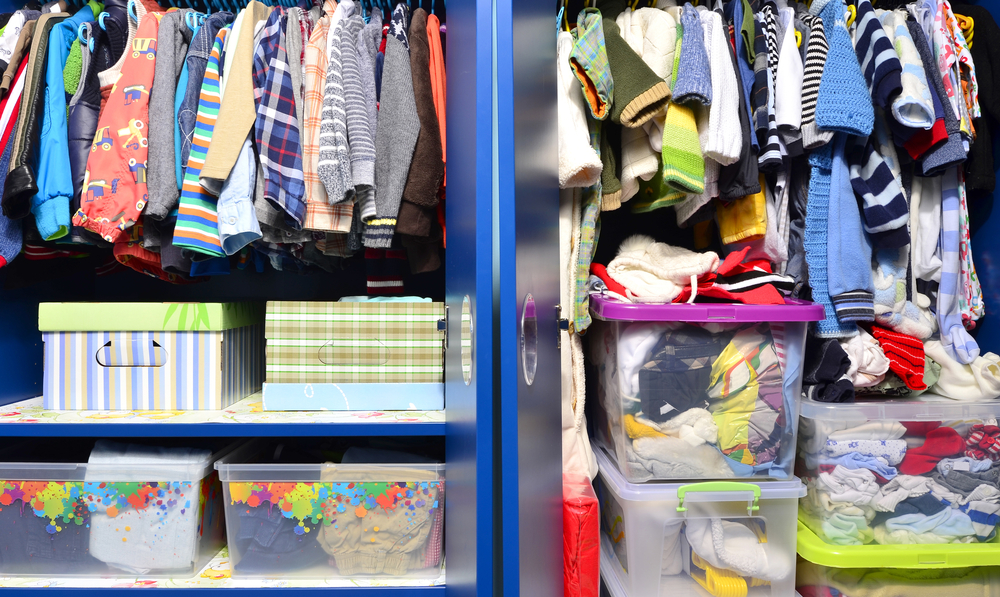February 2, 2024 - Benjamin Ehinger
Closet Clean Out: Steps to Declutter Your Wardrobe Efficiently
CALL NOW 844-762-8449
Tackling a closet clean out can be an invigorating step toward organization and peace of mind in your home. Imagine opening your closet to see only the items you love and use regularly, with everything in its place. Achieving this does require effort, but it’s not just about discarding the old and out-of-fashion. It’s a deliberate process where you evaluate what to keep, donate, or discard. Remember, it’s not uncommon to accumulate a considerable amount of unwanted items, so consider securing a home dumpster rental to manage the disposal efficiently.
Cleaning out your closet also creates space for new items and makes getting ready simpler and more enjoyable. However, the benefits aren’t just aesthetic or practical; there’s also a psychological uplift in decluttering your space. It can be transformative for your daily routine and well-being. To start, empty your closet completely and categorize each item. As you sort through your belongings, think pragmatically about the use and necessity of each piece. For items you decide to part with, a 10-yard dumpster rental might be ideal for handling the bulk, ensuring a swift and tidy process.
Effective closet clean-outs hinge on sorting your items with defined strategies. These techniques help you decide what stays, what goes, and how to organize your remaining wardrobe for maximum efficiency and style.
Achieving a clutter-free closet is a continuous process that involves regular upkeep and adherence to organizational rules.
Key Takeaways
- A well-planned closet cleanout reduces clutter and streamlines your daily routine.
- Renting a dumpster simplifies the disposal of unwanted items efficiently.
- Regular closet maintenance prevents future accumulation and keeps your space organized.
The Benefits of a Closet Clean Out
A well-organized closet can save you time every day. When your space is streamlined, finding your favorite shirt or pair of shoes becomes much quicker. This efficiency extends beyond just clothing; an organized closet space can contribute to a smoother morning routine. Mental Clarity: A clean-out promotes a clearer mind. Your closet mirrors your mental state. A tidy space reflects a decluttered mind allowing for relaxation and less stress. Cleaning out your closet might be a form of self-care that supports mental wellbeing. Economic Savings: You might uncover lost or forgotten items during a clean-out. Rediscovering these can save you money, as you are less likely to buy duplicates. Also, selling items you no longer wear can pad your wallet. Simplicity:- Reduces Decision Fatigue: Fewer choices lead to easier decisions.
- Encourages Mindful Consumption: Becoming aware of what you have helps resist impulsive purchases.
Preparation for Closet Clean Out
Before diving into the closet clean out process, it’s vital to have all your tools ready and a designated space to work efficiently.Gathering Supplies
To start your closet clean out successfully, you’ll need several items:- Boxes or bins: Label them for different purposes such as “Donate,” “Sell,” and “Trash.”
- Cleaning supplies: Include a dust cloth and all-purpose cleaner to freshen up your closet space.
- Hangers: Have a variety of hangers available for different types of clothing you’ll keep.
- Tape measure: This is helpful to measure space for future organization solutions.
Setting Up a Workspace
Creating an effective workspace is critical for sorting through your items:- Clear an area: Ensure you have a large, flat surface to fold and stack clothes, like your bed or a folding table.
- Good lighting: Make sure the space is well-lit so you can properly assess the condition of your items.
- Mirror: Have a full-length mirror close by to try on clothes to decide on fit and style.
Sorting Strategies for Your Closet Clean Out
By Category
Start by grouping your items into categories such as tops, pants, dresses, outerwear, and accessories. This method enables you to tackle one category at a time, making the task more manageable and focused. It’s easier to compare items within the same category and make decisions about what to keep. For example, when looking at all your tops, ask yourself if each item fits your current style and life.By Season
Sorting your clothes by season can streamline your closet and keep it functional year-round. Create separate piles for spring, summer, fall, and winter clothing. This not only helps with decluttering but also with transitioning wardrobes as seasons change.- Spring/Summer: Lightweight fabrics, short sleeves, sandals.
- Fall/Winter: Heavier materials, coats, boots.
By Usage
Divide your wardrobe based on how frequently you wear items, such as:- Daily Wear: Items you wear regularly for work or casual outings.
- Occasional Wear: Clothes for events or specific functions.
- Rare Use/Sentimental: Uncommonly worn items with emotional value.
Deciding What to Keep
When embarking on a closet clean-out, focus initially on three critical factors that determine the staying power of your items: fit, frequency of use, and sentimental value.Fit and Comfort
Firstly, evaluate each piece of clothing on whether it fits you properly. Ill-fitting clothes can clutter your space and create dissatisfaction. Ask yourself, Does this garment feel comfortable? and Is it flattering on me? If it doesn’t fit comfortably or hasn’t for some time, it’s time to let go.Frequency of Use
Next, consider how often you wear each item. Create a simple wardrobe inventory listing items under categories such as “often”, “sometimes”, and “rarely”. Pieces that haven’t seen the light of day in over a year might not warrant a place in your closet.Sentimental Value
Finally, assess the sentimental value of your clothing. Some items have personal stories behind them, like a dress worn at a special occasion or a gift. While it’s okay to keep some treasured pieces, ensure they don’t take up valuable space for items that you’ll use regularly.Storage Solutions
In tackling the task of organizing your closet, effective storage solutions can lead to a more functional and accessible space.Maximizing Space
To truly maximize the space in your closet, consider installing a double-hang closet rod for shirts, blouses, and pants, effectively doubling your hanging area. Over-the-door shoe organizers not only keep footwear in order but can also be repurposed to store accessories and small clothing items. Additionally, the use of slim-line hangers can save space and maintain a uniform look.Organizational Tools
Invest in clear storage boxes for easy visibility of contents, which can be stacked to make use of vertical space. Drawer dividers are also invaluable for keeping underwear, socks, and small items neatly compartmentalized. For your shelving needs, look into adjustable shelf dividers, which can separate stacks of clothes and keep them from toppling over. Using label makers can assist you in quickly identifying where every item is located, saving you time and maintaining order.Maintaining a Clutter-Free Closet
Regular Reviews
Conduct monthly reviews of your wardrobe to evaluate what clothes you have worn and which ones you have not. If you haven’t worn an item in the last six months, consider if it’s essential to keep. This practice keeps your closet relevant and prevents unused items from accumulating.One-In-One-Out Rule
Adopt the one-in-one-out rule: for every new piece of clothing you purchase, ensure an old one is donated, sold, or recycled. Not only does this keep your wardrobe from expanding but it also encourages you to make mindful purchasing decisions.Disposal of Unwanted Items
When you clean out your closet, the disposal of unwanted items should be done responsibly. You might rent a dumpster, donate to charity, sell items for extra cash, or recycle fabrics to minimize waste.Rent a Small Dumpster
Renting a small dumpster is a suitable option for a quick and efficient closet cleanout, especially if you have a significant amount of items to throw away. It’s important to check with the dumpster rental company about what materials are allowed.Donation Options
Donation is a charitable way to give clothes a second life. Local shelters, nonprofit organizations, and thrift stores often accept gently used clothing. More specific programs may be available for business attire or formal wear, providing items to people in need. Explore the Simply Fiercely website for practical tips on decluttering your wardrobe.Selling Tips
If you’re looking to sell your clothes, consider online marketplaces or consignment shops for higher-end items. Garments should be in good condition, clean, and presented well in photos for online sales. Check out Trustpilot’s blog for insights on regifting and responsible disposal.Recycling Methods
Recycling is viable for clothes that are beyond repair. Textile recycling programs can turn your old clothes into cleaning cloths, insulation, or even new garments. Some brands offer recycling services for their own products, so it’s worth checking labels and brand websites.Final Closet Clean Out Touches
When conducting a closet clean out, the focus should shift towards enhancing the visual appeal and improving accessibility of your wardrobe.Aesthetic Improvements
After decluttering, consider the overall look of your space. Utilize matching hangers for a cohesive aesthetic, which can transform a disjointed closet into a visually pleasing one. Storage bins and dividers play a crucial role in maintaining neatness, and selecting items with complementary colors can add to the overall visual flow.Accessibility
To make items easy to find, arrange clothing by type and color. Place frequently worn items at eye level and within arm’s reach. For shoes, consider a clear shoe organizer or a designated shelf. If you fold items, keep the stacks low and use shelf dividers to prevent them from toppling. Integrating drawer organizers will keep smaller items sorted and handy.Frequently Asked Questions about Handling a Closet Clean Out
In this section, you’ll find answers to common questions about closet cleanouts, helping you tackle the task with ease and clarity.How do you effectively begin a closet cleanout?
Start your closet cleanout by evaluating every item in your wardrobe, asking if it fits and if you’ve worn it in the past year. Create distinct piles for keep, donate, and discard to simplify decision-making.Which size dumpster rental is best for my closet clean-out?
For most closet cleanouts, a small to medium-sized dumpster is sufficient. You may consider a 10-yard dumpster rental, which is adequate for residential use.What are some efficient strategies for deciding what to keep during a closet declutter?
Focus on the condition, fit, style, and when you last wore the item—to keep your wardrobe functional and up-to-date. An efficient strategy is to keep only those clothes that you love and wear frequently.Can you suggest methods for organizing items during a closet purge?
Organize the items you wish to keep by category first, then by color or season. This makes it easier to find what you’re looking for and maintains order in your closet.What are the benefits of regularly cleaning out your closet?
Regular closet cleanouts can reduce clutter, make outfit selection quicker, and ensure that your wardrobe reflects your current style and body.How can one responsibly dispose of unwanted clothes after a closet clear-out?
Unwanted clothes in good condition can be donated to local charities or sold online. For worn-out garments, look for textile recycling programs in your area to minimize environmental impact.What essentials should you include in a closet cleanout kit?
Your closet cleanout kit should include sturdy trash bags for discards, storage bins for items to keep, and a donation box for gently used apparel. Extra hangers and labels can also make the process more efficient.RECENT BLOGS
Our Reviews
Glenda Lanier Prowell
1721758635
I have ordered an 11 yard dumpster to be delivered to my house.Lonier was extremely helpful and answered all my questions. The rate was very reasonable.
Cedric Smikle
1721660395
Amber was extremely professional and courteous. She answered all of my questions and even some that I didn’t know I needed to ask.
Cait Kaider
1721243051
I highly recommend Waste Removal USA for their responsiveness and how the staff work hard to provide exceptional customer service. They have done well by us and our clients. Thank you!
Easom Family
1721223306
Louiner Pierre-Louis Is awesome! Did a great job. Will definitely be using this same company for all my dumpster needs because of his awesome customer service! Thank you!!!
tabitha Vazquez
1720539988
Wonderful and fast customer service!
LATEST BLOGS








